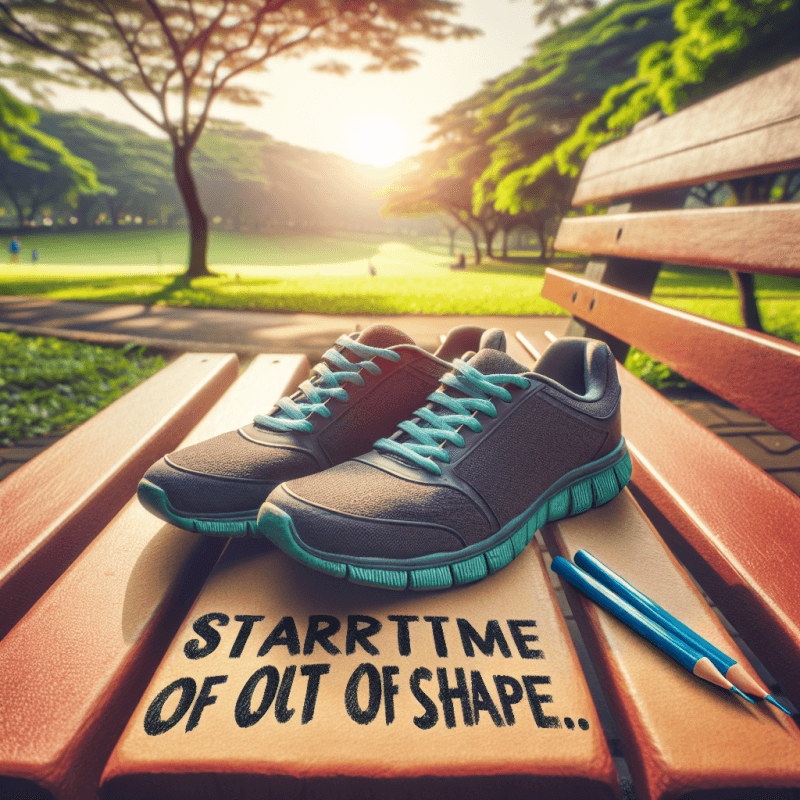Are you over 50 and feeling out of shape? Don’t worry, we’ve got you covered! In this article, we’ll provide you with a variety of exercises specially designed to help you get back in shape and improve your overall fitness. Whether you’re looking to increase your strength, flexibility, or cardiovascular endurance, we have exercises that are suited for all fitness levels. So let’s get started on your journey towards better health and fitness!
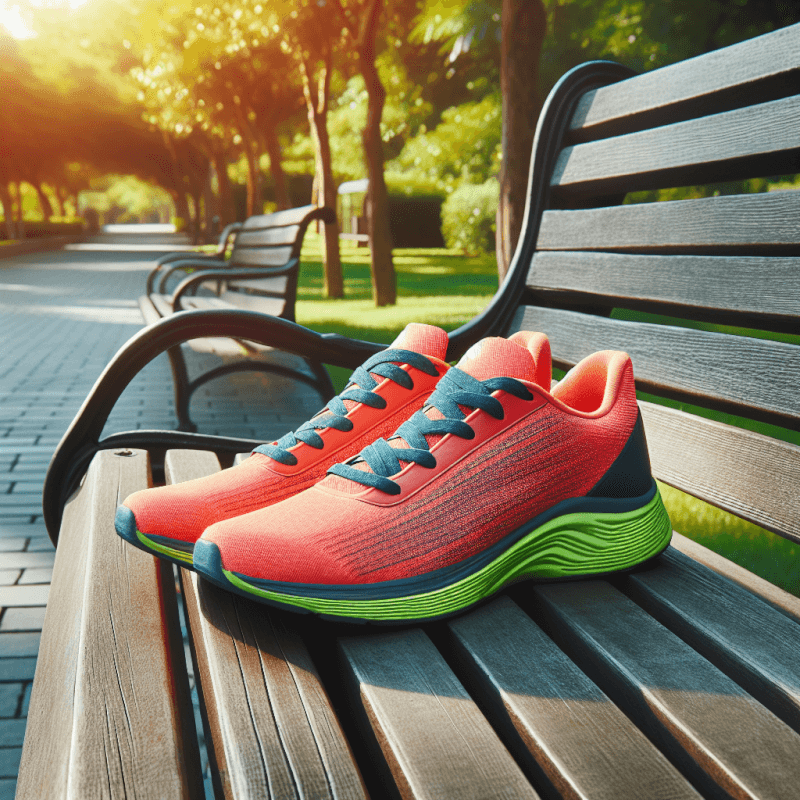
Strength Training Exercises
Squats
Squats are a fantastic exercise for strength training, especially for individuals who are over 50 and out of shape. This exercise targets multiple muscle groups, including the quadriceps, hamstrings, and glutes. To perform a squat, start by standing with your feet shoulder-width apart and your toes slightly turned out. Lower down as if you are sitting back into a chair, keeping your chest lifted and your knees in line with your toes. Push through your heels to return to a standing position. As you gain strength and confidence, you can increase the intensity of your squats by adding weights or performing variations such as sumo squats or goblet squats.
Push-Ups
Push-ups are another excellent strength training exercise that can be modified to suit your fitness level. They target the chest, shoulders, triceps, and core muscles. To perform a push-up, start in a high plank position with your hands directly under your shoulders and your body in a straight line. Lower your chest towards the ground by bending your elbows, keeping your elbows close to your body. Push back up to the starting position, maintaining a strong and stable core throughout the movement. If traditional push-ups are too challenging, you can modify by performing them on your knees or against a wall and gradually work your way up to a full push-up.
Plank
The plank is a simple yet effective exercise for strengthening your core muscles, including your abdominals, lower back, and shoulders. It also helps improve overall stability and posture. To perform a plank, start by getting into a high plank position with your hands directly under your shoulders and your body in a straight line. Engage your core and hold the position for as long as you can while maintaining proper form. Make sure to breathe evenly throughout the exercise. As you become stronger, you can increase the duration of your planks or try variations like side planks or plank with leg lifts.
Dumbbell Rows
Dumbbell rows are a great exercise for targeting the muscles in your upper back, including the rhomboids, trapezius, and rear deltoids. To perform a dumbbell row, start by bending at the waist with a dumbbell in each hand, palms facing inwards. Keep your back flat and your core engaged. Pull the weights up towards your ribcage by squeezing your shoulder blades together. Lower the weights back down with control and repeat for the desired number of repetitions. If you don’t have dumbbells, you can use household items like water bottles or resistance bands as alternatives.
Lunges
Lunges are an effective lower body exercise that works your quadriceps, hamstrings, glutes, and calf muscles. They also help improve balance and stability. To perform a lunge, start by standing with your feet hip-width apart. Take a step forward with your right foot and lower your body by bending both knees to a 90-degree angle. Your front knee should be directly over your ankle, and your back knee should hover just above the ground. Push through your front heel to return to the starting position and repeat on the other side. You can make lunges more challenging by holding weights in your hands or trying variations like reverse lunges or walking lunges.
Cardiovascular Exercises
Walking
Walking is a low-impact cardiovascular exercise that can be easily incorporated into your daily routine. It helps improve cardiovascular health, strengthen muscles, and increase endurance. Aim for at least 30 minutes of brisk walking most days of the week. If you’re just starting out, you can begin with shorter durations and gradually increase the time as your fitness level improves. To make walking more enjoyable, consider exploring different routes, listening to music or podcasts, or walking with a friend or family member.
Cycling
Cycling is an excellent cardiovascular exercise that is gentle on the joints and offers a great workout for the legs and cardiovascular system. Whether you choose outdoor cycling or indoor stationary cycling, you can adjust the intensity to suit your fitness level. Start with shorter rides and gradually increase the duration and intensity as you build strength and endurance. Cycling can be done individually or as part of a group, making it a fun and social activity as well.
Swimming
Swimming is a wonderful low-impact exercise that works the entire body and is suitable for people of all fitness levels. It provides a great cardiovascular workout while being gentle on the joints. Whether you prefer swimming laps, water aerobics, or simply floating and moving in the water, you can tailor your swim to your ability and preferences. Swimming not only helps improve cardiovascular fitness but also builds strength, flexibility, and endurance. Plus, it’s a refreshing way to stay cool during the summer months!
Elliptical Training
Elliptical training is a low-impact exercise that mimics the motion of running without the harsh impact on the joints. It provides a great cardiovascular workout while also targeting the muscles of the legs and arms. Most elliptical machines come with adjustable resistance levels, allowing you to customize the intensity to match your fitness level. To get the most out of your elliptical workout, maintain good posture, engage your core muscles, and vary the resistance and incline settings.
Aerobic Dancing
Aerobic dancing is a fun and energetic way to get your heart rate up and improve cardiovascular fitness. It combines dance movements with aerobic exercises, making it an enjoyable and effective workout for people of all ages and fitness levels. Whether you choose to follow along with a video at home or join a group class, aerobic dancing can help increase stamina, coordination, and flexibility. Plus, it’s a great way to let loose, have fun, and boost your mood!
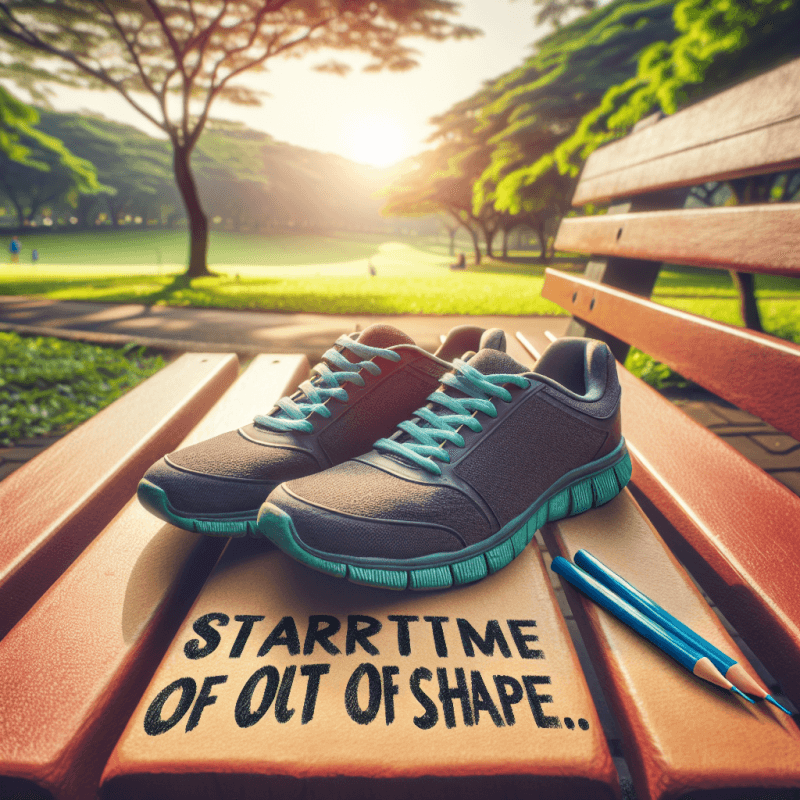
Flexibility Exercises
Neck Rolls
Neck rolls are a simple and effective exercise for releasing tension in the neck and upper back muscles, improving flexibility, and reducing stiffness. To perform neck rolls, sit or stand tall with your shoulders relaxed. Gently tilt your head to one side, bringing your ear towards your shoulder. Slowly roll your head forward, bringing your chin towards your chest, and then tilt your head to the other side. Continue the rolling motion, moving your head in a slow, controlled manner. Remember to breathe deeply and avoid any sudden or jerky movements. Repeat the exercise in both directions.
Shoulder Stretches
Shoulder stretches can help relieve tension and improve flexibility in the shoulder and upper back muscles. One simple stretch is the shoulder roll: stand tall with your feet shoulder-width apart, and let your arms hang loosely by your sides. Slowly roll your shoulders forward in a circular motion, squeezing your shoulder blades together at the back. After several circles, reverse the direction and roll your shoulders backward. Another effective stretch is the overhead reach: stand tall with your feet hip-width apart, raise one arm overhead, and reach towards the opposite side. Hold the stretch for a few seconds and then switch sides.
Chest Opener
The chest opener stretch helps counteract the forward rounding of the shoulders that can occur from poor posture or spending too much time sitting. To perform the chest opener, stand tall with your feet shoulder-width apart and interlace your fingers behind your back. Gently press your palms together and lift your arms behind you, keeping your shoulders relaxed and your chest open. Hold the stretch for 20-30 seconds, breathing deeply. If you find it difficult to interlace your fingers, you can use a strap or towel to hold onto while performing the stretch.
Hamstring Stretches
Hamstring stretches are essential for maintaining flexibility in the back of the thighs, which can become tight and less flexible with age. One effective stretch is the standing hamstring stretch: stand tall with your feet hip-width apart, and step one foot forward. Keep your front leg straight and hinge forward at the hips, reaching towards your toes. Only go as far as comfortable without straining. You should feel a gentle stretch in the back of your thigh. Hold the stretch for 20-30 seconds, breathing deeply, and then switch to the other side. Another variation is the seated hamstring stretch, where you sit on the edge of a chair with one leg extended and the other foot on the floor, and lean forward to stretch the hamstring of the extended leg.
Quadriceps Stretches
Quadriceps stretches are important for maintaining flexibility in the front of the thighs, which can become tight and shortened from prolonged sitting or lack of exercise. One simple stretch is the standing quad stretch: stand tall with your feet hip-width apart, and gently bend one knee, bringing your foot towards your glutes. Use your hand to hold onto your foot or ankle, keeping your knee pointing towards the floor. Hold the stretch for 20-30 seconds, breathing deeply, and then switch to the other leg. An alternative is the lying quadriceps stretch, where you lie on your side, bend one knee, and grab hold of your foot or ankle, pulling it towards your glutes.
Balance and Stability Exercises
Single Leg Stance
The single leg stance exercise is a simple yet effective way to improve balance and proprioception. Start by standing tall with your feet hip-width apart and your arms by your sides. Shift your weight onto one leg and lift the opposite foot a few inches off the ground, finding your balance. Keep your core engaged and your gaze fixed on a stationary point in front of you. Hold the position for 30 seconds or as long as you can maintain good form, and then switch to the other leg. As you progress, you can make the exercise more challenging by closing your eyes or performing it on an unstable surface like a foam mat.
Heel-to-Toe Walk
The heel-to-toe walk, also known as the tandem walk, is an excellent exercise for improving balance and coordination. Begin by standing tall with your arms by your sides. Place one foot directly in front of the other, so that the heel of your front foot touches the toes of your back foot. Keep your eyes focused on a fixed point in front of you and slowly walk in a straight line while maintaining the heel-to-toe positioning. Take small steps and engage your core to help stabilize your body. Aim to walk for 20-30 steps before turning around and returning to the starting point. If you find it challenging, you can use a wall or a support for balance.
Standing Leg Swings
Standing leg swings are a dynamic exercise that helps improve balance, flexibility, and strength in the lower body. Start by standing tall with your feet hip-width apart and your hands on a wall or a support for balance. Swing one leg forward and backward in a controlled manner, maintaining a straight posture and engaging your core muscles. Repeat for 10-15 swings and then switch to the other leg. To increase the challenge, you can perform the swings without support, or try swinging your leg to the side, across your body, or in a circular motion.
Chair Yoga
Chair yoga is a gentle form of exercise that helps improve balance, flexibility, and strength while seated or using a chair for support. It is suitable for individuals of all fitness levels, including those who may have difficulty with standing exercises. Chair yoga typically involves performing modified yoga poses and stretches while sitting on a chair or using a chair for balance and support. It helps improve posture, reduce stiffness, and increase overall well-being. There are many chair yoga resources available online or through local community centers that can guide you through a safe and effective practice.
Tai Chi
Tai Chi is a traditional Chinese martial art that combines slow, flowing movements with deep breathing and mental focus. It is often referred to as “moving meditation” and is known for its numerous health benefits, including improved balance, flexibility, strength, and mental clarity. Tai Chi is particularly beneficial for older adults and individuals who are looking for a low-impact exercise that promotes overall well-being. Many community centers, gyms, and senior centers offer Tai Chi classes led by experienced instructors, making it a social and enjoyable activity to incorporate into your routine.
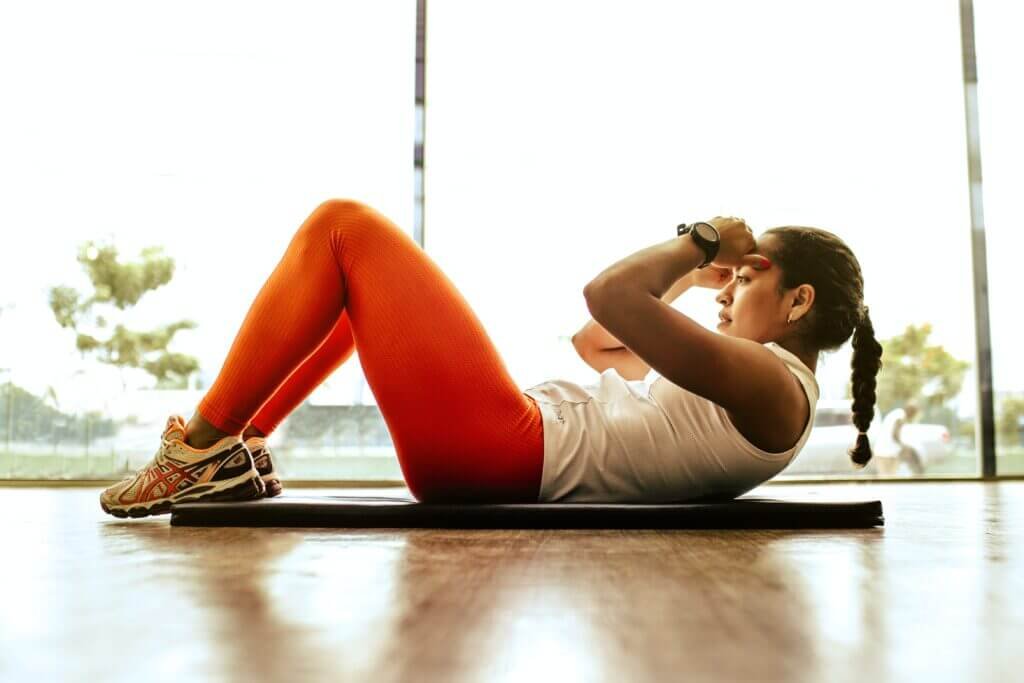
Low-Impact Exercises
Water Aerobics
Water aerobics is a fantastic low-impact exercise that provides a great cardiovascular workout while also strengthening muscles and promoting flexibility. It takes advantage of the water’s buoyancy, which reduces the impact on your joints while still providing resistance for muscle toning. Water aerobics classes are typically held in shallow pools and involve a variety of movements, such as jogging, jumping, arm exercises, and leg kicks. The water’s resistance adds an extra challenge to your workout, helping to improve strength and endurance. Plus, exercising in water helps keep you cool and refreshed!
Pilates
Pilates is a gentle yet effective low-impact exercise that focuses on core strength, flexibility, and body awareness. It combines controlled movements with deep breathing and emphasizes proper alignment and smooth, flowing sequences. Pilates exercises can be performed on a mat or using specialized equipment such as the Pilates reformer or resistance bands. It helps improve posture, balance, and overall body strength, making it ideal for individuals who may be recovering from an injury or looking for a low-impact exercise that still delivers results. Consider taking a Pilates class or working with a certified instructor to ensure proper form and technique.
Yoga
Yoga is a holistic practice that combines physical postures, breathing techniques, and meditation to promote overall health and well-being. It can be adapted to suit any fitness level or physical condition, making it a great option for individuals who are over 50 and out of shape. Yoga helps improve flexibility, strength, balance, and mental focus. There are various styles of yoga, including Hatha, Vinyasa, and Yin, each offering unique benefits and approaches. Whether you choose to practice at home using online resources or join a local yoga class, yoga can be a rejuvenating and calming exercise for both the body and mind.
Stationary Biking
Stationary biking is a low-impact exercise that provides a great cardiovascular workout while being gentle on the joints. It is particularly beneficial for individuals who may have joint or back pain and want to avoid high-impact activities. Whether you have a stationary bike at home or use one at the gym, you can adjust the resistance and intensity to suit your fitness level. Start with shorter sessions and gradually increase the duration and intensity as you build strength and endurance. Stationary biking can be a convenient and enjoyable way to get your heart rate up and burn calories while improving leg strength and cardiovascular fitness.
Tai Chi
Tai Chi, as mentioned earlier in the Balance and Stability Exercises section, is not only a great exercise for balance and stability but also falls under the category of low-impact exercises. Its slow, controlled movements are gentle on the joints and promote relaxation and mindfulness. The flowing sequences improve flexibility, coordination, and overall body strength without placing excessive stress on the joints. Tai Chi is suitable for people of all ages and fitness levels, and its emphasis on proper body alignment and controlled breathing can have a positive impact on both physical and mental well-being.
Core Strengthening Exercises
Modified Sit-Ups
Modified sit-ups are a beginner-friendly way to strengthen your core muscles without straining your neck or lower back. Lie on your back with your knees bent and your feet flat on the ground. Place your hands behind your head or crossed over your chest and engage your core. Slowly lift your head and shoulders off the ground, keeping your lower back in contact with the floor. Lower back down with control and repeat for the desired number of repetitions. As you gain strength, you can increase the difficulty by extending your arms or adding twists to the movement.
Pelvic Tilts
Pelvic tilts are a gentle exercise that targets the muscles of the lower back and abdomen, helping to improve core strength and stability. Begin by lying on your back with your knees bent and your feet flat on the ground. Place your hands on your hip bones. Slowly tilt your pelvis forward, pressing your lower back into the ground and engaging your abdominal muscles. Hold for a few seconds and then release, allowing your lower back to arch slightly. Repeat the movement for the desired number of repetitions, focusing on the controlled and intentional movement of your pelvis.
Bird Dogs
Bird dogs are a challenging yet effective exercise for strengthening the core muscles, including the abdominals, lower back, and glutes. Start on all fours with your hands directly under your shoulders and your knees directly under your hips. Engage your core and extend your right arm straight forward while simultaneously extending your left leg straight back. Maintain a neutral spine and avoid sinking or arching your back. Hold for a few seconds and then return to the starting position. Repeat on the other side, alternating between right arm/left leg and left arm/right leg. To make the exercise easier, you can perform it with just the arms or just the legs.
Bridge Pose
Bridge pose is a challenging yet effective exercise for strengthening the glutes, hamstrings, and lower back, while also improving core stability. Begin by lying on your back with your knees bent and your feet flat on the ground, hip-width apart. Place your arms beside your body, palms facing down. Engage your core and press through your heels to lift your hips off the ground, creating a straight line from your knees to your shoulders. Hold the position for a few seconds, squeezing your glutes, and then slowly lower your hips back down. Repeat for the desired number of repetitions, being mindful of maintaining proper form throughout the movement.
Dead Bug
The dead bug exercise is a challenging yet effective way to engage and strengthen the deep core muscles while also improving coordination and stability. Start by lying on your back with your arms extended straight up towards the ceiling and your knees bent at a 90-degree angle, stacked directly above your hips. Engage your core and extend your right arm overhead while simultaneously straightening your left leg, keeping it hovering just above the ground. Return to the starting position and repeat on the other side, extending your left arm overhead and straightening your right leg. Continue alternating sides while maintaining proper form and stability. To make the exercise easier, you can keep both feet on the ground or reduce the range of motion.
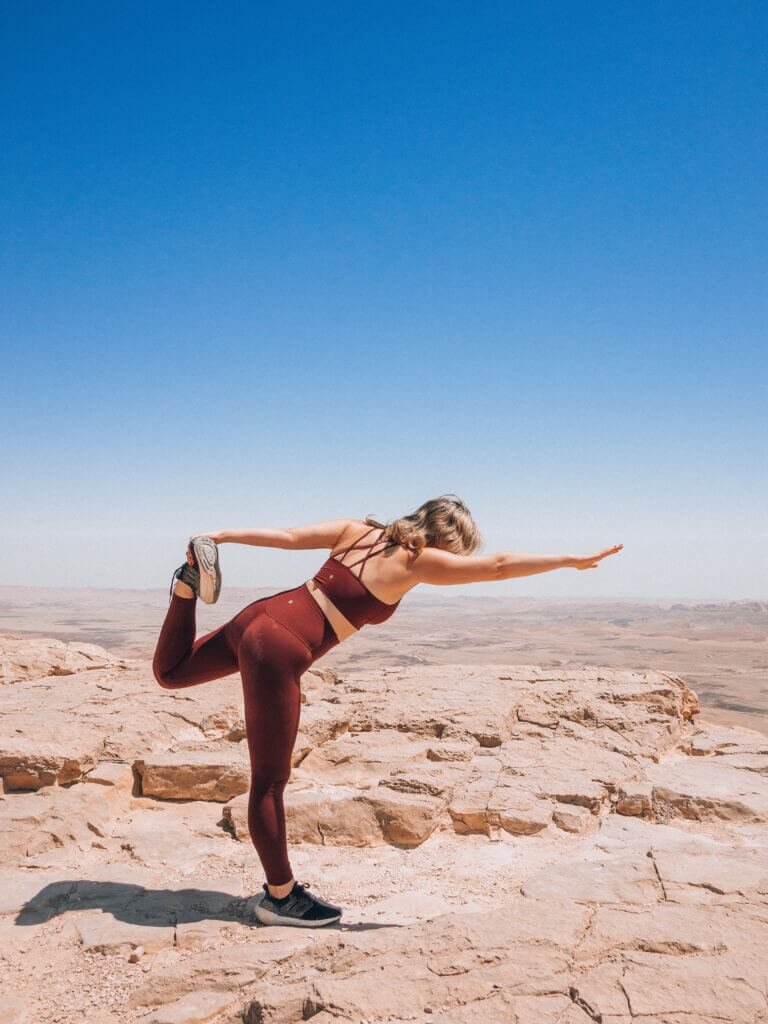
Resistance Band Exercises
Bicep Curls
Bicep curls with resistance bands are an excellent way to strengthen and tone the biceps muscles without the need for heavy weights. Stand tall with your feet hip-width apart and place one end of the resistance band under your feet, securing it with your toes. Hold the other end of the band with your palms facing forward and your arms fully extended at your sides. Keeping your elbows close to your body, slowly curl the band up towards your shoulders by bending your elbows. Pause for a moment at the top and then lower back down with control. Repeat for the desired number of repetitions, feeling the resistance in your biceps throughout the movement.
Tricep Extensions
Tricep extensions with resistance bands are a great exercise for targeting and toning the back of the arms. Stand tall with your feet hip-width apart and place one end of the resistance band under your feet, securing it with your toes. Hold the other end of the band with your palms facing inwards and your arms extended overhead. Keeping your upper arms stationary, slowly bend your elbows to lower the band behind your head, feeling the stretch in your triceps. Extend your elbows back to the starting position, squeezing your triceps at the top. Repeat for the desired number of repetitions, focusing on maintaining proper form and control throughout the movement.
Shoulder Press
Shoulder presses with resistance bands are an effective exercise for strengthening the deltoid muscles of the shoulders. Stand tall with your feet hip-width apart and place one end of the resistance band under your feet, securing it with your toes. Hold the other end of the band with your palms facing forward and your elbows bent, bringing your hands up to shoulder level. Press the band overhead by straightening your arms, keeping your core engaged and your spine neutral. Pause for a moment at the top and then lower back down with control. Repeat for the desired number of repetitions, feeling the resistance in your shoulders throughout the movement.
Chest Press
Chest presses with resistance bands are a great exercise for targeting the muscles of the chest, including the pectoralis major and minor. Attach the resistance band to a sturdy anchor point at chest height. Stand tall facing away from the anchor point with your feet staggered, one foot slightly in front of the other. Hold the ends of the band with your palms facing down and position your elbows at a 90-degree angle. Push forward with both arms, straightening your elbows and squeezing your chest muscles at the end of the movement. Return to the starting position with control, maintaining tension on the band throughout the exercise. Repeat for the desired number of repetitions, feeling the resistance in your chest muscles as you press forward.
Leg Curls
Leg curls with resistance bands are an effective exercise for targeting the hamstrings, the muscles on the back of the thighs. Begin by attaching the resistance band to a sturdy anchor point near the floor. Lie face down on a mat or a comfortable surface, looping the band around one or both ankles. Engage your core and bend your knees, bringing your heels towards your glutes. Slowly extend your legs, straightening them as much as possible while maintaining tension on the band. Control the movement as you return to the starting position, feeling the resistance in your hamstrings throughout the exercise. Repeat for the desired number of repetitions, focusing on proper form and engaging the targeted muscles.
Stretching Exercises
Full Body Stretch
A full-body stretch is a great way to increase flexibility, improve range of motion, and relieve tension in the muscles. Stand tall with your feet shoulder-width apart and your arms by your sides. Take a deep breath in, reaching towards the sky with your hands and lifting your heels off the ground. Exhale as you slowly lower your arms and heels, bending forward at the waist and reaching towards your toes. Relax your neck and allow your upper body to hang loosely. Hold the stretch for 20-30 seconds, breathing deeply and feeling the gentle release in your entire body. Slowly roll up to a standing position, stacking one vertebra at a time.
Upper Body Stretch
The upper body stretch targets the muscles of the shoulders, chest, and upper back, helping to improve posture and release tension. Stand tall with your feet shoulder-width apart and interlace your fingers behind your back. Gently press your palms together and lift your arms behind you, keeping your shoulders relaxed and your chest open. Tilt your head slightly forward, feeling the stretch in the back of your neck. Hold the stretch for 20-30 seconds, breathing deeply, and then release. You can also perform a similar stretch by placing one hand on a wall or a sturdy object and gently rotating your body away from the hand.
Lower Body Stretch
The lower body stretch focuses on the muscles of the legs, including the quadriceps, hamstrings, calves, and hips. Stand tall with your feet hip-width apart. Step one foot forward with a slight bend in the knee, and extend the other leg straight behind you, keeping both feet flat on the ground. Engage your core and gently lean forward at the hips, feeling the stretch in the back of the extended leg. Hold the stretch for 20-30 seconds, breathing deeply, and then switch sides. You can also perform a similar stretch by standing near a wall and placing the toe of one foot against the wall, while leaning forward to stretch the calf muscles.
Back Stretch
The back stretch helps relieve tension and improve flexibility in the muscles of the lower and mid-back. Start by sitting on the ground with your legs extended out in front of you. Cross one leg over the other, placing the foot of the crossed leg flat on the ground outside the knee of the extended leg. Twist your upper body towards the crossed leg, placing your opposite elbow on the outside of your knee to deepen the stretch. Gently twist and look over your shoulder, feeling the stretch in your back. Hold the stretch for 20-30 seconds, breathing deeply, and then switch sides.
Spinal Twist
The spinal twist stretch targets the muscles of the back, hips, and glutes. Begin by lying on your back with your knees bent and your feet flat on the ground. Extend your arms straight out to the sides, in line with your shoulders. Slowly lower both knees to one side, keeping your shoulders relaxed and both shoulder blades in contact with the ground. Gently turn your head in the opposite direction, feeling the stretch through your spine and hips. Hold the stretch for 20-30 seconds, breathing deeply, and then switch to the other side. You can place a pillow or rolled-up towel under your knees for support if needed.
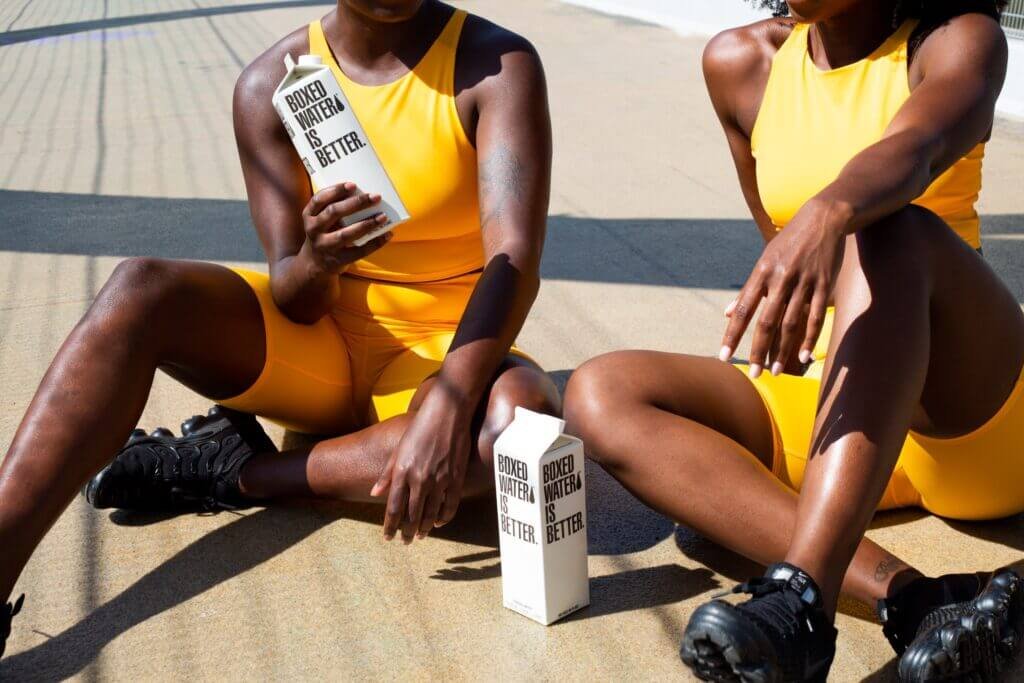
Seated Exercises
Seated Leg Lifts
Seated leg lifts are a simple yet effective exercise for strengthening the muscles of the lower body, including the quadriceps, hamstrings, and glutes. Sit tall on a sturdy chair with your feet flat on the ground and your knees bent at a 90-degree angle. Place your hands on the sides of the chair for support. Lift one foot off the ground and extend the leg forward, keeping the knee straight and the toes pointed towards the ceiling. Hold for a moment and then lower the foot back down with control. Repeat on the other side, alternating between legs for the desired number of repetitions. You can increase the intensity by adding ankle weights or using resistance bands.
Seated Arm Raises
Seated arm raises are a simple exercise that helps strengthen the muscles of the shoulders and upper back. Sit tall on a sturdy chair with your feet flat on the ground and your knees bent at a 90-degree angle. Hold a pair of light dumbbells or household objects like water bottles in each hand, palms facing down. Start with your arms resting by your sides. Keeping a slight bend in your elbows, lift both arms out to the sides and up towards the ceiling, stopping at shoulder level. Lower the arms back down with control and repeat for the desired number of repetitions. Remember to engage your core and maintain proper posture throughout the exercise.
Seated Marching
Seated marching is a simple yet effective exercise for improving circulation, increasing heart rate, and engaging the core and leg muscles. Sit tall on a sturdy chair with your feet flat on the ground and your knees bent at a 90-degree angle. Place your hands on the sides of the chair for support. Lift one foot off the ground and bring the knee towards your chest, then lower it back down and repeat with the other leg. Continue alternating between legs in a marching motion, aiming for a steady and controlled pace. You can increase the intensity by incorporating arm movements, such as lifting the opposite arm as the knee comes up.
Seated Side Bends
Seated side bends are a gentle exercise that targets the muscles of the obliques, the sides of the waist, and the lower back. Sit tall on a sturdy chair with your feet flat on the ground and your knees bent at a 90-degree angle. Place your hands on the sides of the chair or on your hips. Keeping your back straight and your core engaged, slowly lean to one side, reaching towards the ground with your hand. Return to the starting position and repeat on the other side. Continue alternating between sides, focusing on the lateral movement and feeling the stretch in the opposite side of your waist.
Seated Twist
The seated twist is a gentle exercise that helps improve mobility in the spine, stretch the muscles of the lower back, and engage the core. Sit tall on a sturdy chair with your feet flat on the ground and your knees bent at a 90-degree angle. Place your right hand on your left knee and your left hand on the backrest of the chair. Slowly twist your upper body to the left, using your hands to gently deepen the stretch. Hold the position for a few seconds, breathing deeply, and then slowly come back to the starting position. Repeat on the other side, alternating between sides for the desired number of repetitions. Focus on maintaining proper posture and engaging the core throughout the exercise.
Group Exercise Classes
Zumba
Zumba is a fun and lively group exercise class that combines dance and aerobic movements to upbeat music. It is a great way to improve cardiovascular fitness, coordination, and overall well-being while having a blast. Zumba classes typically involve a variety of dance styles, such as salsa, merengue, hip-hop, and reggaeton, making them suitable for individuals of all fitness levels and dance abilities. The energetic and infectious atmosphere of a Zumba class can motivate you to get moving, burn calories, and unleash your inner dancer!
Pilates Mat Class
Pilates mat classes are group exercise sessions that focus on the fundamental principles of Pilates, such as core strength, flexibility, and body awareness. Led by a certified instructor, these classes typically involve a series of exercises performed on a mat without the need for specialized equipment. The instructor guides you through controlled movements that target the core muscles, improve posture, and increase overall body strength. Pilates mat classes offer a supportive and encouraging environment to learn proper form and technique while enjoying the benefits of Pilates in a group setting.
Cycling Class
Cycling classes, also known as spin classes, are high-energy group exercise sessions that take place on stationary bikes. Led by a certified instructor, these classes incorporate interval training, hill climbs, and sprints to improve cardiovascular fitness and leg strength. The music and motivating atmosphere create an engaging and challenging workout experience suitable for all fitness levels. The adjustable resistance on the bikes allows participants to control the intensity of their workout, making it a great option for those who want to push themselves or take it at a more moderate pace.
Water Aerobics Class
Water aerobics classes are group exercise sessions that take place in shallow water, typically in a pool. Led by a certified instructor, these classes involve a variety of movements, such as jogging, jumping, kicking, and arm exercises, that incorporate the resistance of the water for a full-body workout. Water aerobics is a low-impact exercise option that is gentle on the joints while still providing a challenging cardiovascular and muscular workout. The buoyancy of the water reduces the impact on the body and allows for greater range of motion and decreased stress on the joints.
Yoga Class
Yoga classes provide a nurturing and peaceful environment to practice yoga postures, breathing techniques, and meditation. Led by a certified instructor, these classes cater to individuals of all fitness levels and aim to improve flexibility, balance, strength, and mental focus. Whether you choose a gentle yoga class, a restorative class, or a more physically challenging flow class, you can expect to experience the many benefits of yoga, including reduced stress, increased relaxation, improved posture, and enhanced mind-body connection. Yoga classes often end with a guided relaxation or meditation, allowing you to leave feeling calm, centered, and refreshed.
In conclusion, incorporating a variety of exercises into your routine can help improve your overall fitness, strength, flexibility, balance, and cardiovascular health, irrespective of age or current fitness level. The exercises mentioned in this comprehensive article are specifically tailored for individuals who are over 50 and out of shape. By incorporating strength training exercises like squats and push-ups, cardiovascular exercises like walking and swimming, flexibility exercises like neck rolls and hamstring stretches, balance and stability exercises like single leg stance and chair yoga, low-impact exercises like water aerobics and tai chi, core strengthening exercises like modified sit-ups and bird dogs, resistance band exercises like bicep curls and tricep extensions, stretching exercises like full body stretch and spinal twist, seated exercises like seated leg lifts and seated side bends, as well as group exercise classes like Zumba and yoga, you can enjoy a well-rounded and enjoyable fitness routine. Remember to always listen to your body and consult with a healthcare professional before starting any new exercise program, especially if you have any pre-existing medical conditions or injuries. Start slowly and gradually increase the intensity and duration of your workouts, and most importantly, have fun and enjoy the process of becoming stronger, healthier, and more active.

